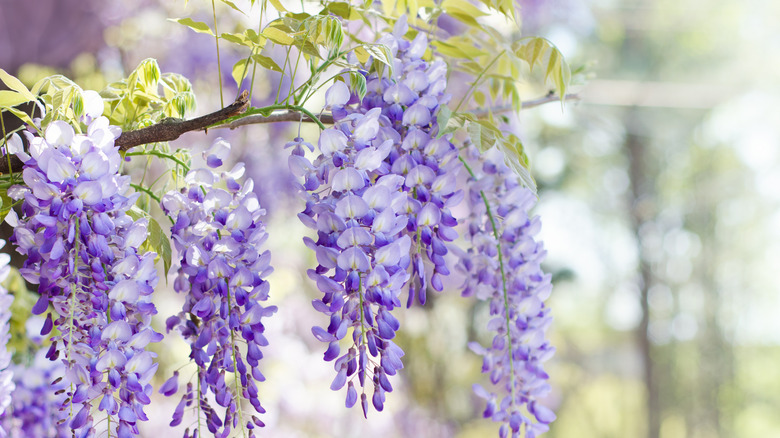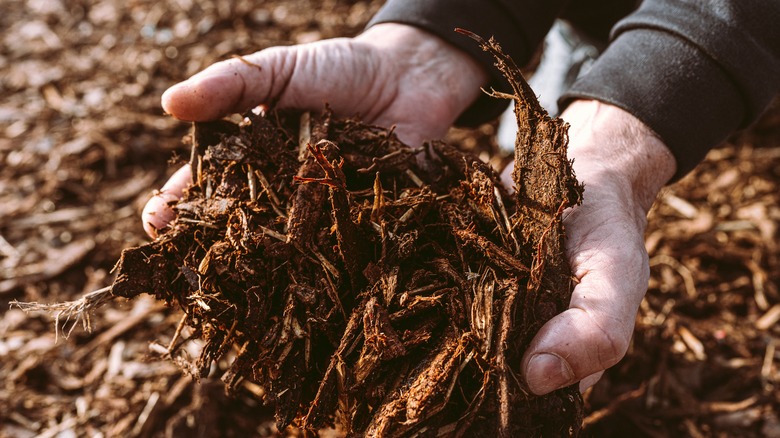Important Fall Tasks To Ensure Your Native Wisteria Blooms Beautifully In The Spring
We may receive a commission on purchases made from links.
American wisteria (Wisteria frutescens) and Kentucky wisteria (Wisteria macrostachya) are non-invasive wisteria varieties that'll add deep fragrance and color to your yard, and though they are native to North America, your plants may still need some help getting ready for winter. While these flowering perennials are known to survive both hot and cold weather, taking extra care of your plants in the fall will help prepare them for winter so they can thrive next spring. Kentucky wisteria is hardy in USDA zones 3 to 9, while the American wisteria tolerates zones 5 through 9. Even though these plants may be able to handle the cold winter weather, providing ground coverage, vine management, and frost protection for potted plants will ensure your wisteria isn't damaged and looks gorgeous when it blooms again.
You may be tempted to cut back some of the long vines, but fall is not when you should prune wisteria. Rather, this task should wait until later in winter when the plant has been dormant. Instead of reaching for your shears, try training the vines by tying them with PerkHomy Natural Jute Twine. Without doing it tightly, fasten any long or dangling vines onto your trellis or support to keep them safe from intense winds. The stems should be secure but still have a little wiggle room.
Helping wisteria thrive with fall care
Autumn maintenance can often be overlooked when growing and caring for wisteria, as these plants tolerate cold weather fairly well. However, giving your plant a little extra attention during this time can help it bloom beautifully next growing season — particularly if it is younger or has been struggling. One of the most important fall tasks is to mulch around your wisteria, using wood chips, straw, or shredded bark to help insulate the roots of the plant from cold temperatures, about 3 inches thick. Mulching also helps plants retain moisture, though you should continue watering your wisteria as usual until the ground freezes to ensure it has enough water throughout the winter.
This should also be done for your potted plants, but they may need extra help from a frost protection cover like the Planket. Burlap can also be placed over your wisteria to keep it warmer, though you'll only need to do it for your in-ground plants if your area experiences extremely cold temperatures. Additionally, if you've noticed that your native wisteria tends to spread more than you'd like, even though it's not invasive, fall is a good time to cut off the seed pods and prevent this. Though these fall maintenance tasks are very simple, they will help your wisteria to remain strong throughout winter and boast beautiful blooms in the fall.

